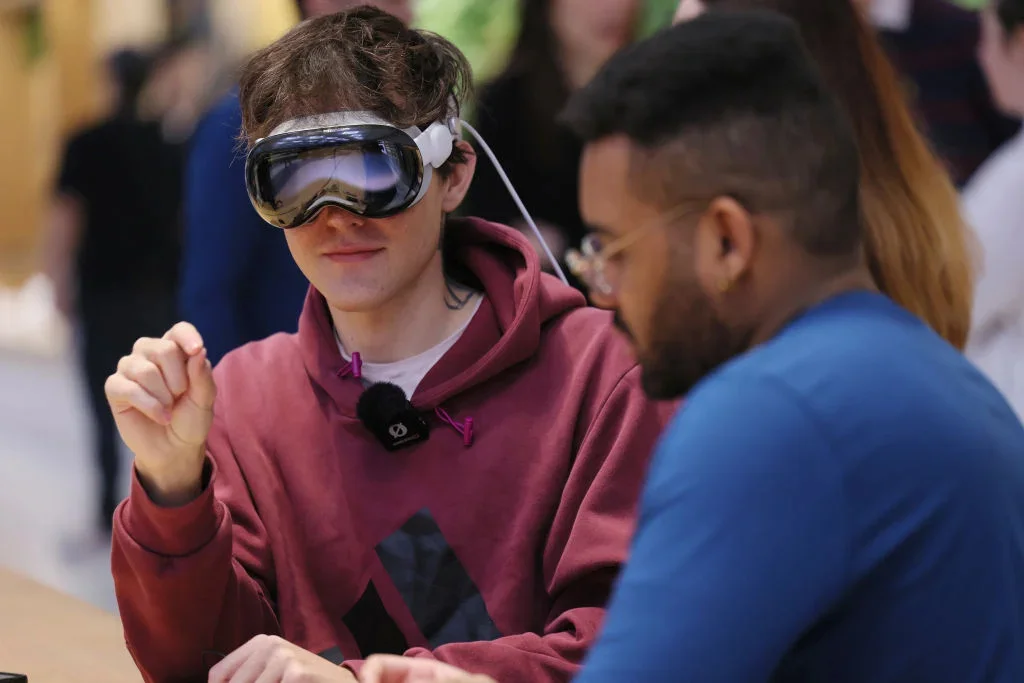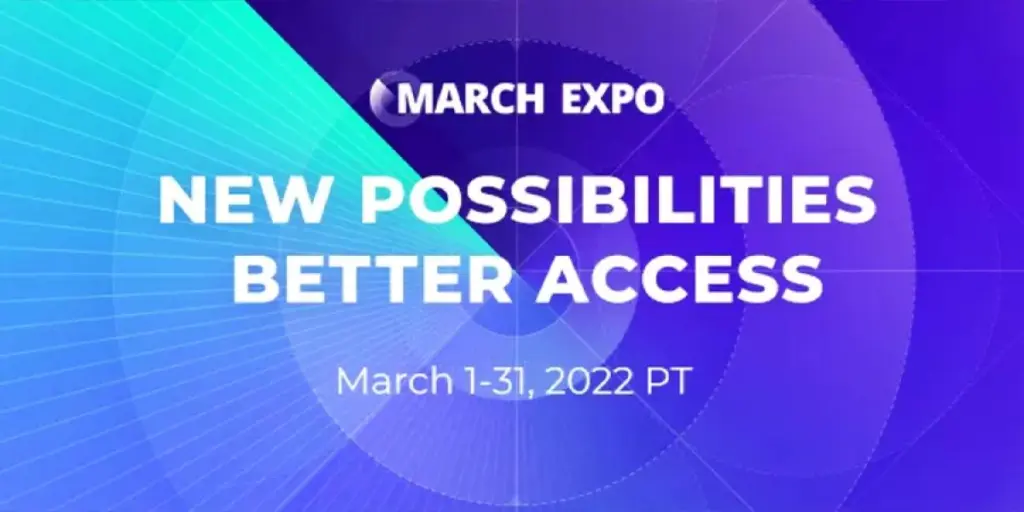The Vision Pro promises “spatial computing” which places applications into your physical space.

Apple’s long-awaited augmented reality (AR) headset, the Vision Pro, has finally arrived in the US, with promises from the iPhone maker that it will mark a new age of virtual reality (VR) technology.
The headset, which retails at $3,499, is effectively a computer you can wear on your face. Apple has marketed the device as a multipurpose piece of kit that works differently to every other AR headset on the market, many of which have been met with lukewarm receptions since 2013.
The Vision Pro promises “spatial computing” which means you can use applications while remaining in your physical space. The advertisements leading up to the launch showed a father wearing it while playing with his children, someone wearing it at work, and even someone sporting the tech while doing basic household chores.
The initial reception has been positive with critics and users citing that it feels like technology from the future. But what does that future hold for the Vision Pro? The meteoric rise of generative AI since the release of OpenAI’s ChatGPT has seen the technology implemented into almost every industry. Will the same happen to AR technology?
According to research company GlobalData, the AR headsets market is expected to record a compound annual growth rate of 56.3% between 2022 and 2030, as new devices continue to be introduced in the market and new use cases emerge.
Here are four industries Apple’s Vision Pro and AR technology has the potential to affect.
Healthcare
The healthcare industry has been exploring a number of use cases for VR since the technology’s emergence, which makes it a key industry that could be affected by the Vision Pro and its AR technology.
VR programs are currently being used by surgeons around the world to work together in virtual spaces to plan and execute procedures. With the use of the Vision Pro’s AR technology, surgeons could implement their real-world operating theatres into training programs – heightening the training process.
Doctors are also using VR technology to help treat patients with mental disorders such as phobias, OCD and depression.
Some patients suffering from a specific phobia have been put into virtual spaces to help face their fears. With the Vision Pro and AR technology, care for these patients would be elevated by allowing them to challenge their phobias in the familiar surroundings of their home – rather than a fully digital area.
Stephanie West, head of school of health and care management at Arden University, where they use AR and simulations to teach healthcare students, told Verdict: “University courses must ensure students can meet the demands of their future job, and delivering programmes undertaken through digital and blended learning will ensure they are confident with how the professional world now operates.
“Simulating real-life scenarios, where students can see the consequences of their decisions will be a lesson remembered,” West added, ”it will place them into similar situations they will face on a day-to-day basis in their career, eradicating that steep learning curve often faced when thrown into the deep end after gaining a degree.”
Retail
The Vision Pro and AR technology have the potential to completely transform the retail industry in the long term. The balance between consumers choosing between e-commerce and in-person shopping has increasingly been favoured towards online outlets in the internet age.
However, an immersive shopping experience is almost entirely lost on websites and apps because consumers are not able to try on the clothes they browse or physically see the rug they are looking to buy.
With the use of the Vision Pro’s spatial computing technology – which can render fully 3D models into a user’s immediate space – a more immersive online shopping experience can be achieved.
The Vision Pro’s ease of usage would also transform the retail experience, allowing businesses to more effectively market their products through the use of interactive videos, images and audio.
In 2022, Swedish furniture store IKEA, released its The Place App which allows customers to project digital versions of furniture into the room they want to put it. This would be heightened with the Vision Pro, which would allow for a more immersive experience.
Education
The Vision Pro and its AR technology have the potential to affect the education industry by providing more immersive experiences of teachers and students.
As Apple states in its “AR for learning” report: “Imagine students walking around 3D shapes and graphs in maths class or moving iPad to visualise the systems of a virtual frog in science.”
The use of Apple’s Vision Pro can help students get fully immersed into a subject with a 360 view – possibly aiding in the understanding of complex concepts.
“Immersive media is incredible at driving knowledge retention,” Rosh Singh, managing director for EMEA at UNIT9, told Verdict.
“Textbooks can become living, breathing stories, folding out in front of you. Kids will want to learn, because all of a sudden it becomes fun and more akin to play,” Singh added.
Entertainment
The media and advertising industry is already utilising AR technology to create unique and immersive experiences.
In the entertainment industry, new forms of content are being created which blends the physical and digital together. Some live shows, for example, have been using AR technology to display lyrics to the audience while on stage – as well as providing entire digital performances for people to experience in their own home.
Gaming companies have employed AR technology to boost user’s experiences for years. Niantic and Nintendo‘s 2016 smash-hit, Pokemon Go, allowed users to collect Pokemon in the real-world with AR technology through a smartphone.
The Vision Pro will be able to amplify these experiences with more powerful computing power, granting developers larger scope to create more immersive applications.
Michael Robert, a cybersecurity specialist and tech expert, told Verdict that gaming is primed for advancements through AR.
“The ability to fully immerse yourself in vivid virtual worlds or feel like you’re right in the action of a race or battle is astonishing,” Robert said.
“Not to mention entirely new genres that simply aren’t possible on traditional screens,” he added, “I am thinking about collaborating with friends to solve puzzle rooms together or using your whole body as a controller.”
The use of the Vision Pro and AR also makes gaming more accessible for those with disabilities that may not be able to enjoy the medium through conventional methods.
“VR opens up gaming to people facing disabilities by allowing alternative control methods and experiences they may not have been able to participate in otherwise,” Robert said.
Apple’s streaming network, Apple TV, has a built in app in the Vision Pro which has unique content built specifically to watch in an AR. In “Alicia Keys: Rehearsal Room,” users can experience the singer’s creative process like they’re in the room with her.
Source from Verdict
Disclaimer: The information set forth above is provided by verdict.co.uk independently of Chovm.com. Chovm.com makes no representation and warranties as to the quality and reliability of the seller and products.





 Afrikaans
Afrikaans አማርኛ
አማርኛ العربية
العربية বাংলা
বাংলা Nederlands
Nederlands English
English Français
Français Deutsch
Deutsch हिन्दी
हिन्दी Bahasa Indonesia
Bahasa Indonesia Italiano
Italiano 日本語
日本語 한국어
한국어 Bahasa Melayu
Bahasa Melayu മലയാളം
മലയാളം پښتو
پښتو فارسی
فارسی Polski
Polski Português
Português Русский
Русский Español
Español Kiswahili
Kiswahili ไทย
ไทย Türkçe
Türkçe اردو
اردو Tiếng Việt
Tiếng Việt isiXhosa
isiXhosa Zulu
Zulu